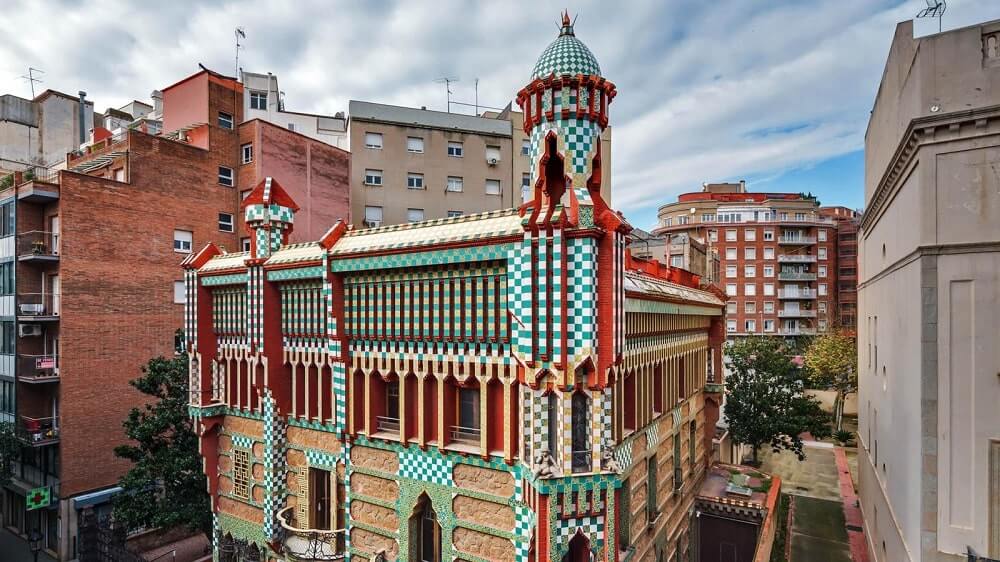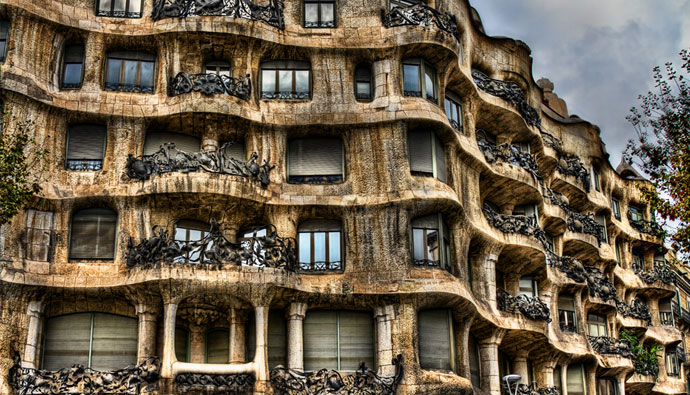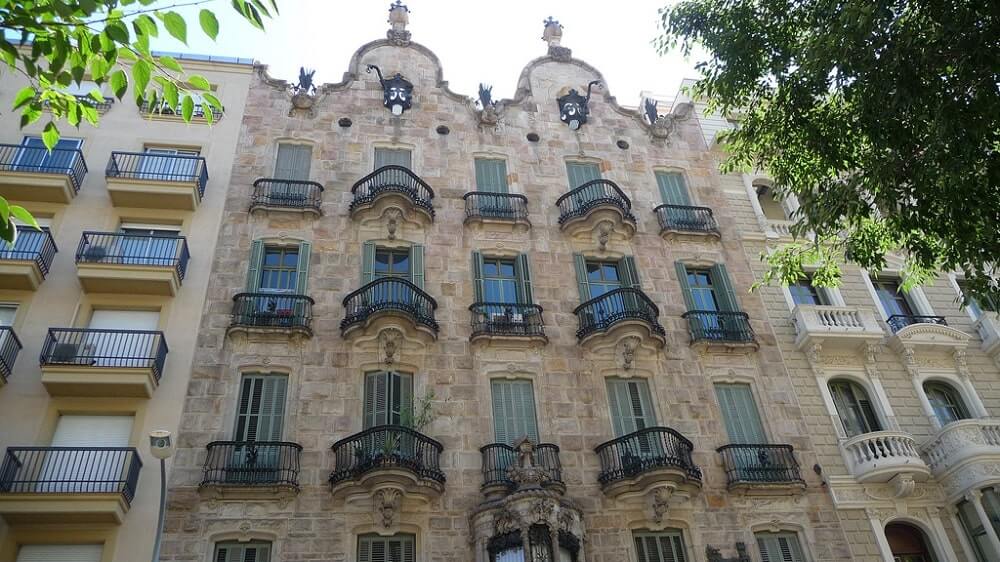
Situated in the Catalan capital, the Calvet House (Casa Calvet) is a historic building, an architectural monument. The five-storey building with a flat roof terrace was built in 1898-1900 for the heirs of the textile manufacturer Pedro Martir Calvet, an active participant in the national movement “Catalan Solidarity” (Solidaritat Catalana). It is considered to be the simplest creation of a talented architect Antonio Gaudi.
However, the house seems unremarkable only at first glance. If you take a good look, the unique style of the master is also recognized here. Although the facade is straightforward and symmetrical, which is not typical for Gaudi, but the master’s hand is guessed in the bay windows on the second floor, in many decorative elements, balconies of unusual shapes with elegant forged and cast iron grilles.
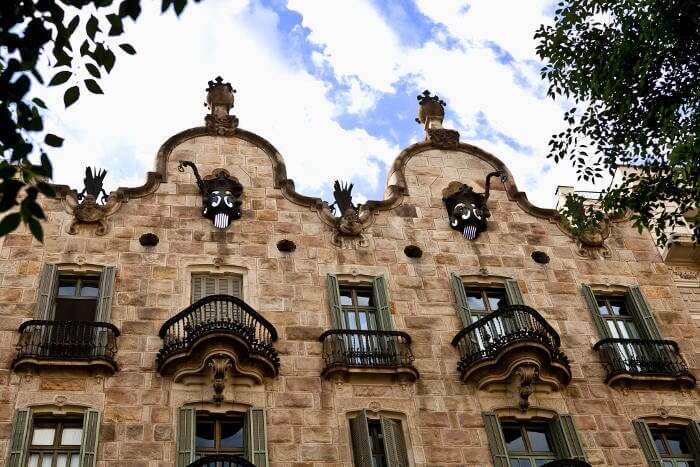
Historical facts
The project was ready in March 1898, but it was not until January of the following year that the construction permit was obtained. At first, the officials refused to issue the document, as the chief architect did not like the two pediments, because of which the height of the building was higher than it should have been. But Gaudi categorically refused to make any changes to the project.
The Catalan has separated the upper part of the building, which extends beyond the maximum height set by the municipality, with a red line in the drawings. He warned that the house would look like it had been cut off if it was not allowed to bring the project to life in its original form. Fortunately, the officials gave in because the client was a very powerful man. He was able to earn the respect of the church, the aristocracy, the big bourgeoisie and the authorities.
The basement and the first floor of the new building were occupied by the factory. The second floor was occupied by the entrepreneur’s family. The rest of the premises were rented out. On each floor there were 2 five-room apartments.
Architecture
The master used elements of Moorish architecture and oriental motifs. The Calvet House in Barcelona is decorated with the busts of three Holy Martyrs, the patrons of the municipality of Villasar de Dalt, where Calvet was born. A variety of decorative elements made of stone and iron have a symbolic meaning. For example, cypress is associated with hospitality, olive branches and pigeons – with the world of horns of abundance – with wealth. As Pedro Martir was a passionate mushroomer, there are mushrooms on the facade.
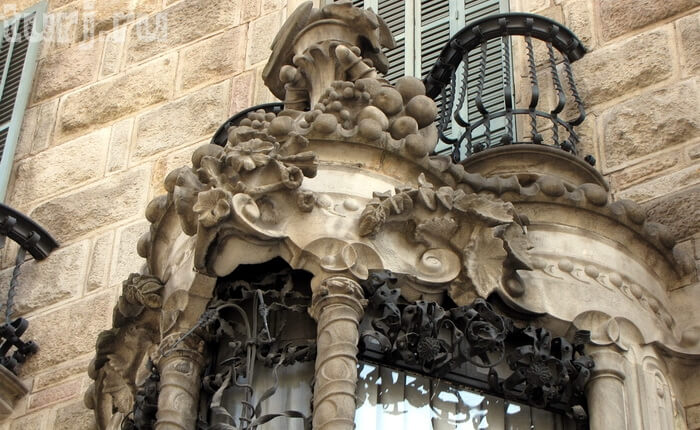
On the powerful wooden entrance door, framed by columns in the form of thread spools placed on each other, hangs a forged door hammer in the form of a cross, which hits the figure of a flea symbolizing the sins. The big “C” above the entrance is the first letter of the owner’s last name (Calvet).
A remarkable part of the building is a remarkable staircase and two adjacent light yards. Antonio gave up the traditional galleries typical of the houses in this neighborhood when decorating the rear facade. Instead, there were unusual bay windows and balconies like the one on the front. It protects the premises from strangers’ eyes and bright sunlight. Afterwards Gaudi became accustomed to decorating the back facade of every building he designed. Examples are Casa Battlo and Casa Mila.
Interior
Admired by Gaudi’s work, the family commissioned him to create an interior design concept. Antonio made sure that the figures and images also reminded the owner of his hobby. He designed an elevator for the company’s offices and invented original oak furniture: tables, chairs, armchairs, as well as many small elements, including partitions, hangers, umbrella stands, handles, etc.
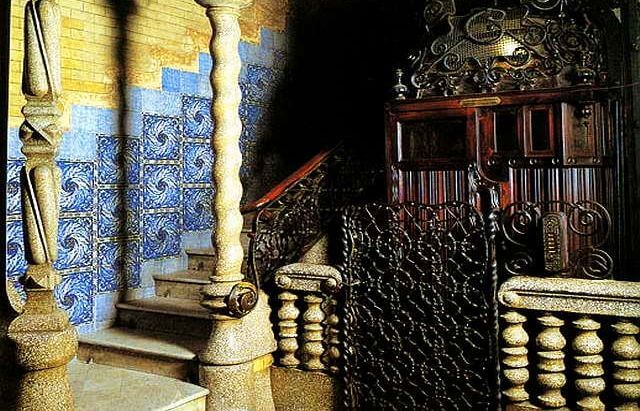
Honorary award
Administrative authorities awarded the master as the author of the project of the best building of 1900 without much pleasure. The Catalan man built several wonderful houses in Barcelona, known all over the world. Seven buildings are on the UNESCO World Heritage List, but only for Casa Calvet did the architect receive an official award.
Casa Calvet now
Gaudí’s little known work is surprisingly well-preserved compared to other buildings, although each new owner made his own changes. Until recently, the ground floor was occupied by a restaurant, which specialized in Mediterranean cuisine. According to the guests’ feedback, the food there was very tasty. Only visitors were allowed to enter the restaurant.
The Casa Calvet restaurant closed in 2018. Whether it will reopen is not reported (as of 2019). Other rooms are not available for inspection, but nobody forbids you to admire the house from the outside.
How to get there?
The building is located in the Eixample district at 48 Carrer de Casp. It can be reached by bus no. 39, 45, 47, 62, B20, B24, V17, as well as by red or yellow metro line (L1 and L4). Exit at Urquinaona station.


